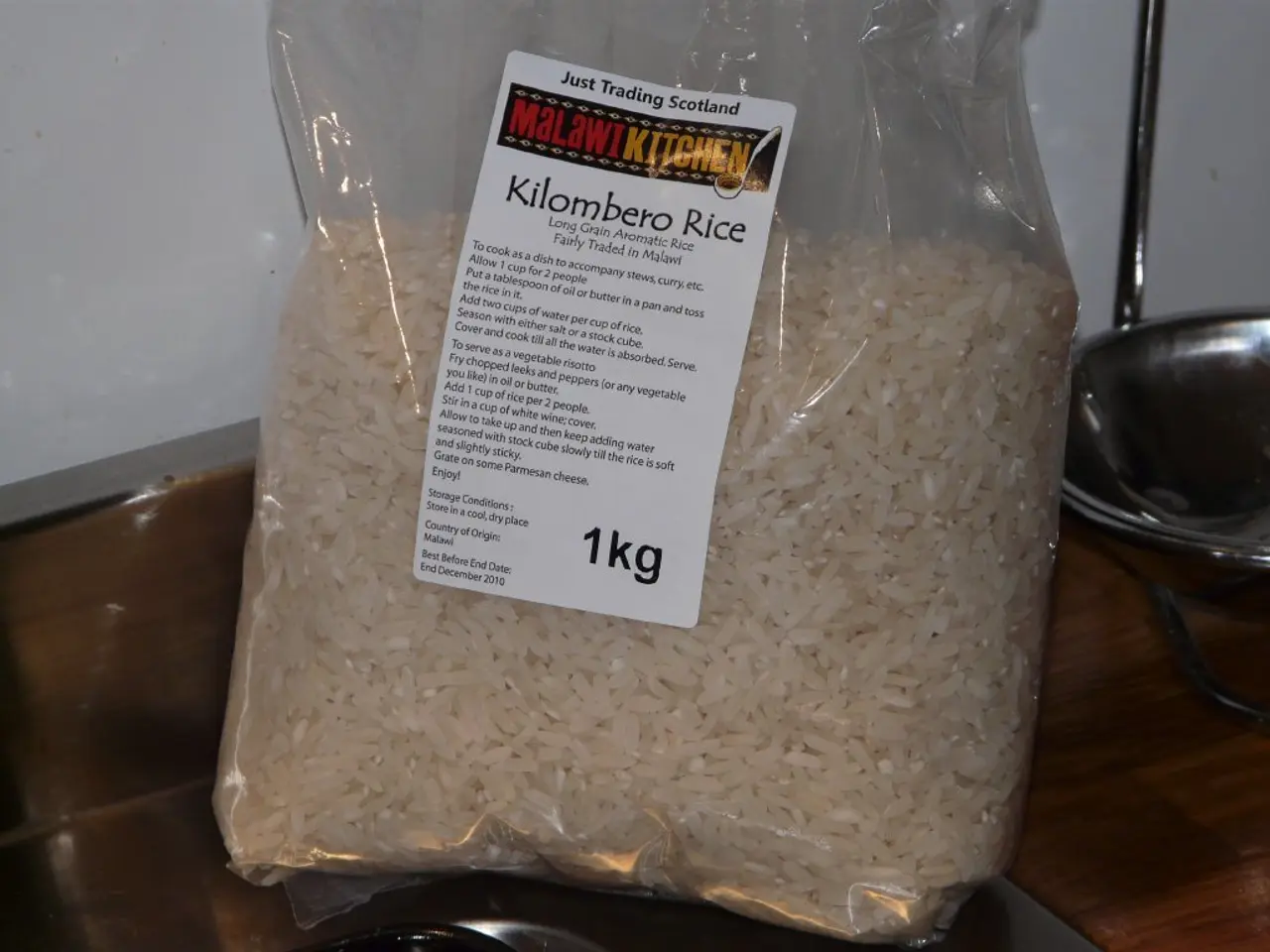Import Duty Increase Effects: Decrease in Basmati Rice Exports to the United States by 13% from April to July, with Potential for Further Decline
The recent US tariff increase on Indian basmati rice exports from 25% to 50% has significantly impacted the global basmati rice market, particularly for India and Pakistan.
Key Trends and Impacts
Pakistan, with a lower 19% tariff compared to India's 50%, is seizing the opportunity to expand its market share in the US. Pakistani basmati exports to the US have surged, with retailers and importers preferring Pakistan's competitively priced rice, around $1,450 per tonne compared to India's nearly $1,800 per tonne [1][2]. In FY24, Pakistan exported approximately 772,725 tonnes of basmati rice, earning $876.9 million—a 35% increase from the previous year. About 24% of these exports were to the US, highlighting its importance as a destination [1][2].
On the other hand, India's basmati rice exports to the US have dropped drastically, from over 90,000 tonnes during the first four months of FY25 to just 78,000 tonnes following the tariff increase [5]. Indian exporters are now actively seeking to diversify to other markets such as China, the Gulf states, and Iran. However, the Chinese market remains smaller and cannot yet fully compensate for the loss of US demand [5].
Geopolitical and Trade Dynamics
The US tariff increase aligns with broader geopolitical tensions and trade policies, including US sanctions on India’s trade relations with Russia. Meanwhile, India’s formal ban on Pakistani-origin goods since May 2025 has complicated the regional trade landscape but has not stopped Pakistan from growing its exports in other markets, including Europe and the Middle East [3]. Pakistani exporters are capitalizing not only on the US tariff advantage but also on strong European demand, despite India’s GI protection efforts there [3].
Market Fundamentals & Future Outlook
India and Pakistan together account for over 70% of the global basmati rice trade. India remains the largest global producer with over 40% of world rice exports and a strong GI-backed brand identity [4]. However, the increased US tariffs may gradually erode India’s export dominance in the US, while Pakistan benefits from competitive pricing and lower tariffs [1][4][5]. Global rice prices are volatile amid these trade shifts, and weather conditions in key growing regions will also influence short-term export volumes [3][5].
Conclusion
The US tariff increase on Indian basmati rice substantially disadvantages Indian exporters, leading to a significant decline in US-bound exports. Pakistan, with its lower duty, is rapidly expanding its market share in the US basmati rice market. Indian exporters are looking to alternative markets, but Pakistan is currently the main beneficiary of this tariff policy shift, solidifying its position in the global aromatic rice trade [1][2][5].
- Despite the increased tariffs on Indian basmati rice exports, the US economy presents a significant opportunity for Pakistan's business expansion, with much lower tariffs (19%) providing a competitive edge in the market.
- The economy of India's rice export sector may be impacted long-term as the tariff increase potentially diminishes India's export dominance in the US, who traditionally account for a substantial portion of global basmati rice trade.
- In attempt to counterbalance the drop in US demand, Indian exporters have turned to alternative markets like China and the Gulf States, with the sports-loving Chinese and Middle Eastern consumers potentially becoming new prospects for Indian basmati rice subscription services.








